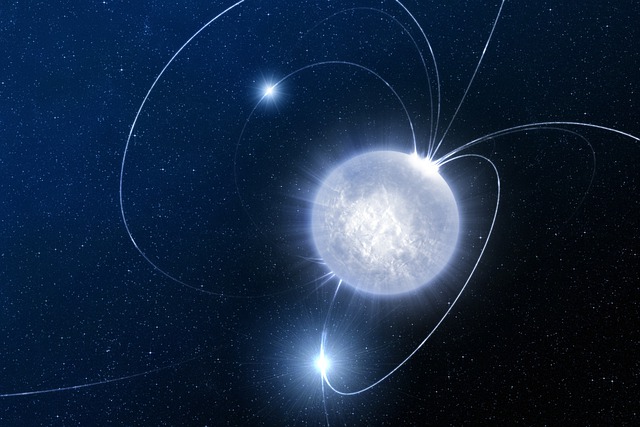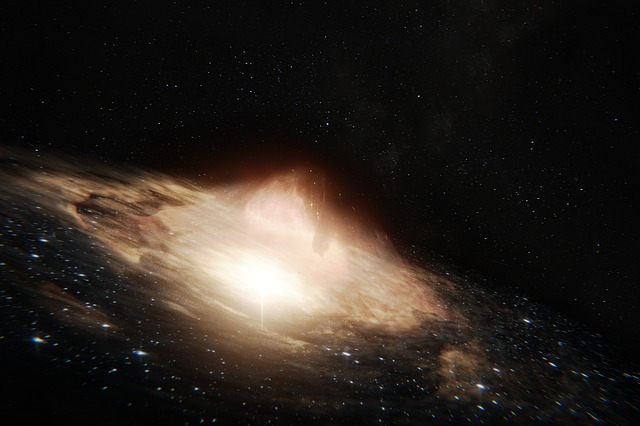*This post may contain affiliate links. This means we may make a commission if you purchase an item using one of our links*
The main differences between a kilonova and a blazar would be that kilonovae are cosmic explosions that occur when 2 neutron stars merge together producing brightness equivalent to a 1,000 novas whilst a Blazars is a quasar that specifically propels jet particle towards Earth and is amongst the brightest entities in the known Universe.
There other differences between the two so, continue reading if you want a more in-depth breakdown of the two, some of their similarities along with the features that separate the two.
What Is A Kilonova?
Table of Contents

For a kilonova to occur 2 neutron stars need to collide. Neutron stars are formed when a star around 8 solar masses explodes through a supernova explosion.
These neutron stars also tend to a be in a binary star system. In this situation if the neutron stars are close to each other, they will gradually spin inwards as a result gravity until they merge together and cause an explosion.
As the name kilo would suggest, kilonovae are typically 1000 times more bright than your average nova however, when it comes to comparing them to your average supernova, they fall far short, whether it be in terms of luminosity or power.
After the explosion has set, scientists have observed that one possible outcome of this collision would be the formation of a black hole.
However, this is unlikely to be the most common outcome as black holes require materials that add up to around 3 solar masses but, according to the Laser Interferometer Gravitational-Wave Observatory study on kilonova collisions, it appears some can result in black holes.
Other kilonovae may have an afterglow that may get brighter over a few months or years after the explosion, which typically will be formed by the x-rays and radio emissions that the explosion ejects.
Of course if a black hole forms, these emissions will eventually fall into its singularity.
What Is A Blazar?

Blazars are a subcategory of quasars, meaning they are one variation of the active galactic nucleus surrounding supermassive black holes.
What differentiates them from other quasars is that they specifically propel high powered jet particles towards Earth.
These jet particles travel at the speed of light towards us, and as was discovered by the IceCube instrument, they allowed us to understand a new particle which would fall under the lepton classification, neutrinos. Much like how quarks make up the majority of matter around us, leptons like neutrinos play a part in this too.
Blazars are very similar to a quasar as they require a bucket load of material build up at the center of a supermassive black hole to form.
There will be an extremely bright excretion disk surrounding these stupendously large black holes that will eject objects at a relativistic speeds towards us, which would essentially be at the speed of light.
Blazars are also some of the oldest resources out in the universe as they allow us to observe the goings on of interstellar objects, millions to billions of years in the past whether it be through the x-rays or gamma rays projected our way, through the gravitational waves or just via the light it produces.
In essence just like any other quasar they will produce arguably the brightest luminosity in the cosmos, last for roughly 10 million years and are angled in such a way that the jet particles propelled are towards Earth.
As result of this angular disposition that blazars have, which isn’t a very normal occurrence, blazars are in turn very rare. That’s why at this moment in time we have only discovered 5.
Similarities Between Kilonovae And Blazars
Other than the fact both are amongst the brightest phenomena in our universe and occur as a result of a bigger stars dead remnants of interacting (as in neutron stars and black holes) they differ significantly.
Differences Between Kilonovae and Blazars
The differences between a kilonova and blazar would include the below:
- Blazars are simply quasars that form around supermassive black holes and propel their jet particles towards Earth whilst a kilonova transpires when two neutron stars merge together and produce an explosion.
- Although a kilonova may be 1,000 brighter than a typical nova explosion, blazars are essentially quasars making them amongst the brightest entities in the known universe as a result.
- Currently only 5 blazars have been discovered. As a result it makes kilonovae a far more abundant phenomena in the known Universe, especially when you consider blazars will only form around supermassive black holes.
- Blazars are the AGN surrounding supermassive black holes which can span billions of kilometers across. a Kilonova explosion is unlikely to surpass this in size as neutron stars are merely a fragment of this size.
- Kilonova explosions tend to be around 9,000 – 11,000 whilst blazars tend to burn at around 100+ billion degrees Celsius.
- Blazars tend to last for around 10 million years on average whilst a kilonova explosion lasts a few years as a result of its afterglow.
Summary
Although both blazars and kilonovae are amongst the brightest cosmic entities in the universe, one is still substantially more powerful than the other.
Kilonovae may have the ability to produce energy levels and brightness that is around 1,000 times more than your average nova but, blazars are in a completely different bracket in this regard, often eclipsing the brightness of multiple galaxies for millions of years.

